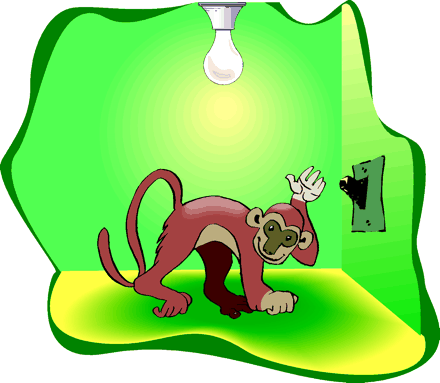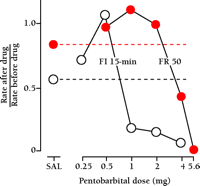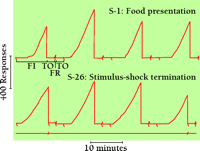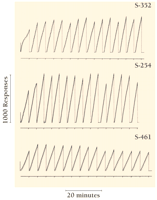The Emergence of Behavioral Pharmacology
- James E. Barrett, PhD
Introduction
Beginning over five decades ago, a pioneering series of studies was conducted that had a profound impact on the field of pharmacology. The impact of those studies was so forceful and sweeping that the discipline of pharmacology was modified in scope and practice by the emergence of a new discipline—behavioral pharmacology. The studies initiating this cascade of events stemmed from the Psychobiology Laboratory at Harvard Medical School and were associated with research conducted by Peter B. Dews, Roger T. Kelleher, and William H. Morse. These individuals shaped the conceptual framework, the experimental direction, as well as the principal focus, that defined and dominated the field of behavioral pharmacology for decades following their initial work in the 1950s. This article will highlight some of the main themes and implications of the work initiated by Dews, Kelleher, and Morse. In particular, I will focus on: i) schedule-controlled behavior and response rate; ii) schedules using noxious stimuli; and iii) the use of second-order schedules.
The Emergence of Behavioral Pharmacology in Historical Context
An understanding of the historical context surrounding the foundation and the initial directions of behavioral pharmacology is crucial to providing an account of the work stemming from the Psychobiology Laboratory at Harvard in the 1950s. Indeed, behavioral context, one of the themes that emerged from the work initiated in that laboratory, has been shown to be a significant influence on the behavioral effects of drug action (1–3) . The 1950s, occasionally referred to as the “Golden Age of Psychopharmacology,” was a period of tremendous growth that led to revolutionary changes in the field of what has become known as neuropsychopharmacology. Within a span of ten years, drugs were discovered and clinically introduced that were effective in treating the major psychiatric illnesses of schizophrenia, depression, and anxiety. The impact of these drugs on the treatment of those suffering from these disorders was tremendous. Those discoveries also have provided the foundation for the rational use of animal model systems for the development of subsequent generations of drugs as well as studies on the biochemical bases of major psychiatric disorders. The introduction of chlorpromazine, imipramine, and the benzodiazepines diazepam and chlordiazepoxide also provided pharmacological tools to address important theoretical and research questions of the time. It was in this rapidly evolving context that the discipline of behavioral pharmacology emerged.
One central theme of research in psychology in the 1950s focused on the effects of drugs on emotional states, a concept tied intimately to the theoretical reduction of drive states as a mechanism for learning (4) . In particular, researchers sought to show that drugs could specifically affect the emotional states presumed to underlie a given behavior. Thus, when differential effects of anxiolytics were obtained on positively reinforced behavior (i.e., behavior maintained by food) as opposed to the effects of these drugs on behavior controlled by noxious stimuli (i.e., behavior suppressed by punishment or maintained by escape from an aversive event), these results were presumed not only to validate a relationship between behavior and specific drive states, but also to confirm that drugs could affect specific emotional states related to particular diseases.
Schedule-Controlled Rate and Pattern of Responding as a Determinant of the Behavioral Effects of Drugs
It was in this context that Peter Dews published the first major finding from the Psychobiology Laboratory in The Journal of Pharmacology and Experimental Therapeutics , in 1955 (5) . That publication described an experimental system that allowed him to establish that specific behaviors maintained by the same positive reinforcer could be differentially —and nearly simultaneously—modified by drugs. Dews’s classic experiment used pigeons trained in a Skinner box to peck a response key according to different schedules of food reinforcement. Under conditions where different food-maintained performances alternated throughout an experimental session, pentobarbital was shown to affect behavior occurring under a fixed-interval (FI) schedule differently from behavior controlled by a fixed-ratio (FR) schedule (see Figure 1⇓). Moreover, single doses of pentobarbital were able to increase pecking rates under the FR schedule at the same time those doses decreased or eliminated responding under the FI schedule. Thus, the effects of pentobarbital depended on the schedule-controlled rate and pattern of responding, with differential behavioral effects obtained with the same reinforcing event. This simple but powerful series of experiments lifted the evaluation and interpretation of drug effects on behavior from that of speculation about ephemeral emotional states to quantitative and observable aspects of behavior that could be manipulated directly and evaluated experimentally. These effects are demonstrated quite graphically in individual pigeons, with the effects of pentobarbital shifting rapidly. It is important to note that, in a later publication, Dews (6) demonstrated that the effects of methamphetamine also differed under FR, as opposed to FI, schedules, and that the direction of the effect was, like the effect of d -amphetamine (Figure 2⇓), opposite that of pentobarbital.
Effects of pentobarbital on key-pecking behavior of pigeons under fixed-ratio and fixed-interval schedules. In a fixed-ratio (FR; solid circles) schedule, food is delivered following 50 pecks; in the fixed-interval schedule, food is given in response to the first peck that occurs after 15 minutes. Each schedule was correlated with a distinctively colored response key, and the schedules alternated throughout the experimental session. Note that response (i.e., pecking) rates decrease under the FI schedule at doses of pentobarbital (i.e. 0.5 – 2 mg, noninclusive) that correspond to increases in response rates under the FR schedule. (SAL, saline). Modified from (5) .
Effects of drugs depend on past experience (i.e., conditioned schedules of reward) and ongoing behavior. Effects of pentobarbital and amphetamine under a multiple fixed-interval (FI; 10 min) fixed-ratio (FR; 31 pecks) response schedule of reinforcement. Administration of pentobarbital decreases response (i.e., pecking) rates under the FI schedule without affecting response rates under the FR schedule. Amphetamine produces just the opposite: response rates under the FI schedule increase while the response rate under the FR schedule becomes negligible (shown by the bracketed areas). From (2) .
The implications and extensions of Dews’s work were profound and guided the nature and direction of subsequent research in behavioral pharmacology over the next four decades. Admittedly, schedule-controlled behavior was being explored independently by many investigators to identify principles of behavioral processes such as discrimination, stimulus control, and prior experience (7, 8) . However, Dews’s application of schedule-controlled behavioral research to pharmacological studies provided insight into both behavioral and pharmacological principles and has had an unparalleled impact on the direction and scientific structure of both fields. Importantly, as often occurs upon the integration of disciplines, the merger of ideas and principles that occurred in response to the work of Dews, Kelleher and Morse revolutionized each discipline in ways that were both unanticipated and overwhelming.
The importance of rates and patterns of conditioned responses engendered by schedules of reinforcement was echoed in countless publications over the next forty years or more. The principles elaborated in those early experiments greatly influenced the ways in which questions were subsequently asked and answered. The incorporation of rigorous experimental control of behavior to assess drug effects endowed behavioral pharmacology with the rigor and precision that had previously typified other branches of pharmacology. Furthermore, Dews’s abilities to communicate his research findings effectively and eloquently, together with his assessment of the range of potential applications and implications, were truly inspirational. In many respects, his early writings served as a rallying cry for behavioral pharmacologists, particularly echoed in a major publication from Kelleher and Morse (9) , affectionately known, simply, as Ergebnisse (i.e., “results,” in German).
Schedules Using Noxious Stimuli
One principle that was elaborated in those early studies by Dews emphasized the role of response rate as an important determinant of drug effects; this principle has been referred to as “rate-dependent drug effects” and has found application in situations where researchers have attempted to make comparisons across behaviors controlled by different types of consequent events. Thus, any situation where questions pertain to whether different behaviors (e.g., aggression; submission; punished or non-punished behavior; drug-maintained behavior) are differentially affected by a drug must also take into account the possibility that observed effects are determined in part by the rate at which those behaviors occur. [The experiments focusing on this particular area have been summarized in a number of publications (4; 10–13) .]
In 1964, Kelleher and Morse examined the effects of chlorpromazine and amphetamine on responding controlled by FI and FR schedules of either food presentation or termination of a stimulus correlated with shock delivery (14) . These experiments stand out as a second landmark study from the Psychobiology Laboratory. Kelleher and Morse established, in squirrel monkeys, rates and patterns of responding that were almost indistinguishable, regardless of whether the maintaining event was food or the termination of a noxious stimulus. Here, if the underlying emotional states had been to influence the effects of drugs, it might have been expected that the effects of these drugs would have been dependent upon whether the behavior was controlled by a positive or a noxious conequence. However, the effects of chlorpromazine or amphetamine were shown to depend more on the schedule of reinforcement than on the type of reinforcement and associated emotional states (Figure 3⇓). This research added strength to the emerging view that environmental conditions—such as those engendered by schedules of reinforcement—and the ensuing rates of responding contributed significantly to the effects of drugs upon behavior (10) .
The preeminence of schedule over reward system in affecting behavior. Behavioral performances of squirrel monkeys maintained under reward by food presentation (S1) or by the termination of a stimulus correlated with the delivery of electric shock (S26). The schedules were FI and FR, as in Figures 1 and 2, with each experimental session beginning with the FI component; the FR schedule is shown by the smaller spikes in the cumulative record and alternates with the FI schedules. Note that the performances maintained by the different events do not differ, nor do the effects of chlorpromazine or amphetamine under these schedules (see text), indicating that the type of reinforcer and the presumed underlying emotional state correlated with these events do not influence the qualitative effects of the drugs. (TO, time-out). From (15) .
Behavior Maintained by Electric Shock
The research using the termination of noxious stimuli as a maintaining event to evaluate drug action was extended in subsequent years by an elegant series of studies showing that administration of electric shock could either maintain or suppress behavior (11, 16) . It had been known for some time that electric shock could serve as an effective means of suppressing behavior; punished behavior was a widely used means of evaluating the effects of various drugs (16) . The seemingly paradoxical maintenance of behavior by electric shock was therefore completely unexpected. Although many researchers analyzed the effects of drugs on behavior maintained by noxious and non-noxious stimuli (17, 18) , Morse and Kelleher embarked on studies that extended the variety of procedures by which behavior could be maintained by response-produced electric shock. Indeed, it proved possible both to maintain and suppress behavior in the same animal using the same shock, showing that the effects of an identical event are contingent upon a number of factors, including behavioral history or prior experience and, again, the schedule of reinforcement (16) . This work, principally behavioral in nature, represents a third major contribution emanating from the Psychobiology Laboratory at Harvard.
This intensely intriguing result—that a primate would respond solely for the delivery of an electric shock in the absence of any other contingency—could be understood through the elucidation of fundamental principles laid down by Morse and Kelleher after years of careful experimentation. Indeed, the insights into this particular result drew from a wisdom about behavioral processes that, in the history of the experimental analysis of behavior, is exceptionally rare. The ramifications were stunning and the principles on which the findings were based had broad applicability to both behavior and pharmacology.
To develop a system in which behavior could be maintained by response-produced shock, Morse and Kelleher brought together several key aspects of behavior that had gone largely unappreciated. In particular, they acknowledged that responses to environmental stimuli are affected by the ongoing rate and pattern of behavior, much like rate-dependent drug effects; ongoing behavior is thus a fundamental determinant of the effects of many stimuli. Secondly, and not completely independent of ongoing behavior, was the principle that behavioral history, or past experience, plays a significant role in determining the outcome of shock delivery and of other events as well. Specifically, Morse and Kelleher expanded upon earlier work showing that the effects of shock presentation could differ in animals with a history of shock avoidance, as compared to animals without that history. By first exposing monkeys to a procedure where their responses avoided shock, Kelleher and Morse were subsequently able to phase in a condition in which responses acted to produce shock and could be maintained solely by shock presentation. These results emphasized that environmental events enter into a flow of behavior that reflects not only the individual’s current environment, but also its established repertoire of responses developed from prior experience. Morse and Kelleher brought to the forefront the important principle that stimuli, such as pain, drugs, and food, do not have static and immutable effects but depend critically on prior experience and ongoing behavior. (For demonstrations and discussions of the role of behavioral history and prior experience in determining the effects of drugs, see also 20–25 ). An appreciation of the richness and complexity of behavior—and of behavioral change—must incorporate current environmental influences as well as past experience. Morse and Kelleher took a seemingly anomalous, incomprehensible result and, through careful experimental work, accounted for this result in a manner that was not only plausible, but which had widespread implications for understanding the genesis and evolution of complex behavior.
Second-Order Schedules
The study of conditioned reinforcement was an active area of research and theory in the 1950s. The basic principles stemmed from the study of classical Pavlovian (respondent) conditioning and were further pursued using the so-called “instrumental” conditioning procedures employed by Hull, Spence, and other psychologists. Specifically, a stimulus paired with food delivery, following a sufficient number of such pairings, would gradually acquire the ability, like food, to also elicit behavior (e.g., salivation). Conditioned stimuli, however, despite their relevance and importance to understanding behavior, were notoriously weak for sustaining lengthy behavioral performances, such as those in humans, where conditioned reinforcers play a very prominent role. In the operant procedures developed by Ferster and Skinner (8) , conditioned reinforcement was studied using chained schedules of reinforcement; again, these schedules were not robust in their ability to maintain lengthy sequences of behavior over extended periods of time. It was also curious that drugs such as cocaine or morphine, compared to other reinforcers in the laboratory, were notoriously weak reinforcers in animal studies, meaning that they only weakly maintained responding. The seemingly weak reinforcing effects of drugs were thus at odds with common knowledge about addictive behavior in humans, where drug-seeking behavior was very robustly maintained by conditioned reinforcers that were ultimately correlated with procurement of the abused substances.
In 1966, Kelleher modified the basic procedure for studying conditioned reinforcement and drug administration by incorporating the use of so-called “second-order schedules” of reinforcement (26) . Under a second-order schedule, responses under one schedule produce a brief stimulus, and that sequence of schedule-controlled responding is then reinforced according to another schedule. For example, with one type of second-order schedule, responses produce a brief stimulus according to an FR schedule, and then the first FR to be completed after a period of time (i.e., an FI schedule) produces a stimulus and drug delivery. Such a second-order schedule has been shown repeatedly to be very effective at maintaining behavior by many different consequences (e.g., food (27) , termination of an electric shock (14) , and by various drugs such as cocaine and morphine (27–29) (Figure 4⇓). These procedures seemed to corroborate the view that drug-seeking behavior may be based in part on conditioned reinforcement. Second-order schedules made it possible to maintain robust performances with drug administration that, for the first time, rendered drug-maintained performances of similar magnitude and strength to those of other events, such as food; more importantly, these experimental models paralleled the robust drug-seeking behavior shown in drug abusers. The experiments of Kelleher and his colleagues using second-order schedules of reinforcement laid the foundation for using second-order schedules to study the behavioral effects of drug abuse as well as the possible pharmacological interventions that might modify drug-seeking behavior (4, 30) .
Maintenance of drug-seeking behavior by a second-order schedule. Performances of squirrel monkeys under a second-order schedule in which the first 30-response FR completed after 5 min produces an intravenous injection of cocaine; the completion of each 30 responses also produces a brief visual stimulus (indicated by the many diagonal slashes on the three traces) that, following the 5-min FI, result in a brief stimulus plus administration of cocaine. The recording pen returns to baseline upon cocaine administration. Note that exceptionally high response rates were maintained under this second-order schedule. From (29) .
Conclusions
Modern behavioral pharmacology has evolved considerably since the productive and fertile times described above. The use of schedules of reinforcement to maintain behavioral performances and evaluate the behavioral effects of drugs represents the landmark union of two fields. The two fields—behavior and pharmacology—merged fruitfully in the hands of Dews, Kelleher, and Morse, and inspired numerous students and followers in the exciting discipline of behavioral pharmacology. Progress in related disciplines such as molecular pharmacology and neurobiology, together with advances in mouse genetic research and other new technologies, have forced new pressures and emphases on the field of behavioral pharmacology. Behavioral pharmacology now has a degree of credibility and competence that would have been impossible without the pioneering contributions of Dews, Kelleher, and Morse. Behavioral pharmacology is entrenched as a discipline, has equivalent status along with the more established disciplines such as cardiovascular and molecular pharmacology, and is no longer considered a “renegade” area of research. The excitement and productivity that was sustained during the period in which Dews, Kelleher, and Morse worked was impressive and inspiring. The continued vitality of behavioral pharmacology is dependent upon a creative and vigorous approach that is consistent with that of the individuals in the Psychobiology Laboratory of Harvard in the mid 1950s.
- © American Society for Pharmacology and Experimental Theraputics 2002
REFERENCES

James E. Barrett, PhD, Memory Pharmaceuticals Corporation, 100 Philips Parkway, Montvale, NJ 07645. E-mail barrett{at}memorypharma.com; fax 201-802-7190.








